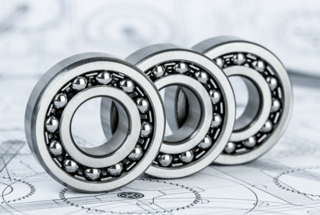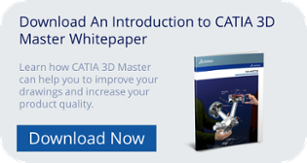 It can be quite frustrating when using 2D drawing methods and design errors just keep cropping up. Misunderstandings happen and then the long process of changing each 2D drawing ensues. This then increases your manufacturing costs and slows down the time to market. It’s a nightmare!
It can be quite frustrating when using 2D drawing methods and design errors just keep cropping up. Misunderstandings happen and then the long process of changing each 2D drawing ensues. This then increases your manufacturing costs and slows down the time to market. It’s a nightmare!
In your mind, maybe the issue is with the person on the other side of the world misinterpreting your drawings. But for the person on the other side of the world, it is your annotations across multiple 2D drawings that don’t make sense to them. It all just seems like a lot of hassle for the sake of one 3D product.
This is where the CATIA 3D Master Approach can make things a lot easier. The CATIA 3D Master allows you to create a single 3D design with accurate and annotated geometric definitions, which can be used as the reference point for product design.The CATIA 3D Master Concept has a number of key values that can help to improve/speed up your product development process, reduce design errors and lower manufacturing costs.
Solid Modelling
Solid modelling systems have developed to allow you to insert the dimensions, geometry design and tolerancing (GD&T), annotations and parts lists directly into the solid model - so you no longer need a whole heap of drawings.
Not bad, right?
You can then create numerous views of the 3D model that can be annotated with notations that other departments can understand, including manufacturing planning, product services, procurement and marketing/sales.
This helps to ensure that there is uniformity in understanding of the solid model across various organizational departments, from a single reference point, and this should start to solve the multiple location issue you might be having. Moreover, this helps these departments in their decision-making based on having more accurate data.
The latest version of solid modelling software also provides you with a full set of GD&T’s, allowing you to easily create 3D tolerance specifications and annotations. This helps to ensure that the dimensioning is accurate and is communicated clearly to the manufacturer of the part.
Tolerancing
When it comes to flatness tolerances, it can be tricky to get right. However, this can be made much easier with the help of a tolerancing advisor. The tolerancing advisor can help you to accurately add geometrical tolerances on the part but avoids the creation of an invalid tolerance, as well as makes suggestions for potential solutions.
Ultimately, this confirms that across the surface of the part where the flatness tolerance is applied, there is no point which goes beyond the tolerance zone.
The tolerancing meaning can then be re-used later in the process, particularly during tolerance analysis (assessing potential sources of variation in the part), part manufacturing or to check the dimensioning throughout the design stage.
Tolerancing and annotations can also be the basis of templates, allowing automation in product development. This brings the advantage of speeding up the product development process so products can be brought to market faster.
Versatility in the Product Development Process
What’s great about the CATIA 3D Master Concept is that 2D and 3D aspects of a design can be used together in various stages of product development. So at the Conceptual phase, the 2D layout for 3D design capabilities allows users to work in a 3D environment.
At the preliminary phase, tolerance and annotations can be applied to the 3D creation.
The assembly drawing can then be used for manufacturing planners as well as further downstream.
Re-using Product Definitions
The CATIA 3D Master Approach brings a huge range of exciting benefits, including huge savings in re-use of product definition information when applied to product families. Specifically, the 3D Master Concept allows users to easily re-use geometric information and the complete product definition, which can even be applied to future versions of the product.
Reduce Manufacturing Costs
Another great benefit of the CATIA 3D Master Approach is the potential to reduce manufacturing costs. The use of tolerancing allows you to open up tight tolerances, with tolerance analysis enabling the prediction of variations in assembly based on tolerancing for specific parts.
Additionally, you can check to see if the product meets its dimensional requirements through simulating the build. This allows you to loosen tolerances and reduce manufacturing costs by up to 90%.
Ultimately, the CATIA 3D Master Concept can work wonders for your product development process through 5 key values;
- Solid Modelling - allowing you to insert the dimensions, GD&T, annotations and parts lists directly into the solid model, eliminating the need for drawings.
- Tolerancing – using a tolerance advisor, you can create flat tolerances with ease, as well as use the tolerances as the basis of templates for future product development.
- Versatility in the Product Development Process – a combination of 2D and 3D elements can be used at various stages in the Product Development Process.
- Re-Using Product Definitions – product definitions can be re-used in product families or future products.
- Reduce Manufacturing Costs – the use of tolerancing and simulation can help to reduce manufacturing costs by up to 90%.
Now everyone in the product development process can have a clearer understanding of product development, giving you the best chance of pleasing your customers.
For more information on the CATIA 3D Master Concept and how it can improve your product development, download the whitepaper ‘3D Master – Driving Accuracy into Your Business’.
.png?width=139&height=70&name=DTE-Logo%20(4).png)

